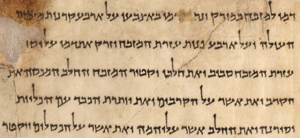Temple Scroll Revisited: The Gigantic Dimensions of the Visionary Temple in the Temple Scroll, Magen Broshi, Biblical Archaeology Review (13:6) Nov/Dec 1987.
I would like to make one small additional point about the Temple Scroll relating to the size of the temple envisioned in it.
Of five major subjects dealt with in the scroll, the foremost is the temple, its design and the ordinances pertaining to it. This subject occupies almost half the length of the scroll; hence, the name Yadin gave to the scroll (the original name is unknown).
The temple compound as described in the scroll consists of three concentric square courts—the inner court, the middle court and the outer court. In the midst of the inner court would stand the temple and the various buildings connected with it.
Read the rest of Temple Scroll Revisited- The Gigantic Dimensions of the Visionary Temple in the Temple Scroll in the Biblical Archaeology Society Library.
What do you want to know?
Ask our AI widget and get answers from this website
